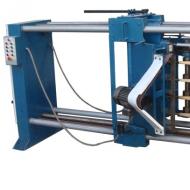
How much does a plate made by yourself with decoupage cost? Decorative plates on the wall are a stylish home decoration. Choosing an interior style
Recently I was invited to a birthday party and, naturally, the question of a gift arose. To be honest, I don’t like to choose, especially for people who live in abundance. Have you ever wondered what to give to the person who has everything? So I had the same problem. I asked everyone around for advice. The ideas didn’t inspire me much, and finances, to put it mildly, were a constraint. But my restless fantasies came to my rescue. I decided to make a souvenir that could not be bought because of its uniqueness, namely a decorative plate. After presenting the surprise, the birthday boy spent a long time advertising and praising my gift. In response, I smiled, but inside I rejoiced, because minimal funds were spent, and the impression I made was stunning. I will share with you the process of working on my decorative plate, perhaps this experience will also be useful to you.
We will need:
- white plate (I have a regular earthenware one),
- a picture printed on a printer (color or black and white),
- paints (I used gouache and pearlescent paints),
- eggshell,
- PVA glue,
- acrylic lacquer,
- scissors,
- brushes.
We clean the plate from dust and deposits and degrease it.
Paste a picture onto the middle of the plate. We use the “” technique, namely: coat the picture on the back side with glue, let it sit for 3-2 minutes so that the paper stretches. Glue it to the plate, carefully smooth it out so that there are no air bubbles, folds or wrinkles. Apply a generous layer of PVA glue on top.

Let it dry. Now we make a background around the drawing with red gouache.

Paint the edges with black paint. Mine turned out brown because I didn’t wait for the red layer to dry, but that didn’t ruin the final result.

The next step is the craquelure technique. We break the prepared egg shells (painted black and dried) into pieces of different sizes and glue them with PVA glue along the entire perimeter of the plate, except for the pattern.

To strengthen it, you can apply a layer of glue on top. Let it dry thoroughly. Apply pink pearlescent paint from the design to the edge approximately 2.3 cm
Decoupage plates
Decoupage plates are a unique and stylish way to decorate plain plates and get creative.
Basics of decoupage tableware: materials, techniques, recommendations
Today, vases, plates and various bottles, most often champagne bottles, have become a popular activity for modern housewives and even a way to make money using a favorite hobby.

Interesting fact: the first attempts at decoupage were discovered not 2-3 centuries ago, but even during the times of Ancient Egypt. Then, in order to preserve the papyrus, it was placed on the wall and covered with several layers of transparent resin.
 Decoupage on papyrus during Ancient Egypt
Decoupage on papyrus during Ancient Egypt

After many years, it could be traced in the elements of a particular culture, but this technique reached particular popularity in the 17th-18th centuries in Italy and France when decorating various elements: from furniture to postcards and accessories.
 Decoupage on furniture and interior items
Decoupage on furniture and interior items
In modern techniques, there are only 5 main techniques or types of decoupage:
- Traditional or classic. For decoration, the image is pasted onto the selected surface and coated with varnish. It, in turn, is also divided into three types depending on what materials are used: decoupage using photographs, transferring a design from paper to the surface and using a special decoupage varnish.
- Reverse decoupage. Patterns and drawings are applied not to the front side, but to the back side of the object (it is mainly used to decoupage plates).
- Creating a volumetric effect. Not only napkin elements are used as materials, but also beads, stones, textures and fabric, and egg shells. Using this technique, decoupage is done on vases, watches, champagne bottles, plates, boxes and almost any other items that you like as a base.
- The artistic technique attaches particular importance to blurring the boundaries between the base and the glued part to create one complete picture.
- The deco patch absorbed the basis of the patchwork. Various shreds and pieces of paper are used for decoration. Three-dimensional objects look good in this style, so most often they make three-dimensional animal figurines and decorate champagne bottles.
What to pay attention to when decorating plates
Every housewife tries to make her kitchen cozy and unique. A variety of decoration methods are used, and the most common is decoupage.
 Decoupage on plates is a real work of art
Decoupage on plates is a real work of art
 Bright decoupage plates will help give the interior a cheerful mood
Bright decoupage plates will help give the interior a cheerful mood
 Decoupage plates in ethno style
Decoupage plates in ethno style
Utensils created with its help: vases, plates, champagne bottles, saucers will not only decorate the kitchen or dining room, but also a good gift for loved ones.
 Decorative set of plates for kitchen decoration
Decorative set of plates for kitchen decoration
Decoupage plates are an excellent choice for those who are just looking at this type of art. You can use any type of plates for decoration.
 Artistic decoupage of plates
Artistic decoupage of plates
But, if you are not yet confident in your abilities, it is better to focus on flat products with a smooth surface. The best choice would be plastic or porcelain utensils without patterns or ornaments.
 Decoupage plates are a unique and stylish way to decorate ordinary plates and express your creativity
Decoupage plates are a unique and stylish way to decorate ordinary plates and express your creativity
Also, in addition to the basics, you need to stock up on the following tools and materials:
- napkins with scenes and patterns;
- decoupage glue and varnish;
- brushes with bristles made of synthetic fibers;
- acrylic paints;
- stencils and scissors.

Decoupage of plates can be created both on the front side of the product and on the back side.
 Decoupage on the front side of the plate
Decoupage on the front side of the plate
In the second case, this is possible if you take a completely transparent glass or plastic plate as a basis. This technique is called “reverse” decoupage.

The main stages of creating a masterpiece from a plate
Decoupage of plates is not a complicated process at all and will not take much time and effort.
 Decoupage is a special form of needlework with which you can decorate your kitchen with your own hands.
Decoupage is a special form of needlework with which you can decorate your kitchen with your own hands.
The first and most important step in the work is the complete cleansing of the working base. It needs to be washed, dried and degreased very carefully. If these conditions are not met, the end result may not please you and will forever discourage you from studying this technique further.
Next, we choose from the available napkins those that we like best. You can also combine several sections of different napkins to achieve one overall design. After the choice is made, you only need to separate the top layer of the napkin.

If you have chosen several patterns, then you should figure out in advance where each one will be located directly on the base. Place them on a plate and see how the composition looks. If the base will be decorated with one napkin, then you need to attach it to the plate and mark where the hanging areas will be. They need to be cut with scissors in advance.
 Napkins for decoupage can be the most unusual
Napkins for decoupage can be the most unusual
Next, acrylic glue is applied to the laid out decorative elements and carefully distributed over the surface using a brush. You can also use a brush to smooth out any unevenness that may have arisen when laying out the drawings. You need to make sure that there are no air bubbles or folds under the napkins. After the glue is evenly applied to the entire plane, you can leave the product to dry.
 The main thing in decoupage is accuracy
The main thing in decoupage is accuracy
The last step is coating with acrylic varnish and the decoupage of the plate is completed.
 Decoupage of plates can be mastered by every craft lover
Decoupage of plates can be mastered by every craft lover
 Decoupage is a fascinating form of creativity
Decoupage is a fascinating form of creativity
 Decoupage of plates is a great way to make original decorative items with your own hands
Decoupage of plates is a great way to make original decorative items with your own hands
After this simple technique has been mastered, you can turn to reverse decoupage and the use of additional decorative elements: photos, creating a scuffed or craquelure effect.
Decorating other elements of dishes
I am sure that each of us has faced a dilemma when a beautiful bottle (for example, of liqueur or champagne) was left at home. The contents were gone, but it was a pity to throw it away. In this case, a good solution would be to decorate it using decoupage. You can use a variety of bottles, not only those of champagne or other alcohol, the main thing is that the bottle itself has an unusual shape.
 Decoupage on bottles is an original way to make interesting decorations for the kitchen
Decoupage on bottles is an original way to make interesting decorations for the kitchen
Imagine how several bottles made in the same style, for example, Victorian, ethnic or Provence, will look in the kitchen.

The most popular now are images of flowers, small plots and ethnic patterns. In the Provence style, images of olive branches, spices and baskets of flowers using abrasions and craquelure would be appropriate.
 Classic Provence using decoupage technique on bottles
Classic Provence using decoupage technique on bottles
You can also decoupage a vase that you are already tired of or has gone out of fashion.

This is an excellent solution for updating your interior. Now in stores you can find a huge number of transparent glass vases of completely different shapes and sizes. This is exactly what is best suited for decoration.
 Decoupage combined with craquelure
Decoupage combined with craquelure
Decoupage is not a very complicated, but incredibly diverse decoration technique. Completely different objects are suitable as objects: plates, vases, champagne bottles, boxes, key holders and much more.
Such items will add uniqueness and special charm to your interior, and can also become an exclusive gift for family and friends.
Decoupage plates
Reverse decoupage
Harmoniously selected plates on the wall in any interior will look stylish and fashionable. This is a great alternative way to decorate a room. Nowadays, this decor option is still relevant and is actively used by designers when creating luxurious luxury interiors. At the same time, it is not at all necessary to purchase decorative or souvenir plates; you can create a beautiful composition from ordinary dishes you have. For example, gift plates with views of cities brought from different countries will not only decorate the wall, but will always remind you of a wonderful vacation and happy moments of your life.

Five basic rules for wall decor using plates

The tips listed below will help you create with your own hands an original composition from any plates (gift, decorative, etc.), which will become a “highlight” in your interior.
Match the plates with the style of the room. For a classic style, porcelain with floral patterns in white and blue colors or gold plated are suitable. For a modern style, bright and colorful patterns are used. And in country style, white or cream ceramic dishes will look ideal.

When choosing a color scheme for a wall composition, make sure that it is combined with other details in the interior, for example, with the color of floor tiles, furniture or textiles. You can hang plates with any designs on a plain background.

Apply the principle of contrast when creating a wall composition. Light decorative saucers will go well with dark walls, and vice versa.

When composing a composition of plates, follow the main rule: they must be combined with each other in at least one way, for example: shape, color, pattern or theme.

Combine a collage of dishes with other decorative elements; for example, they will look very nice next to vases or wall sconces (see photo).

Advice! Don’t be afraid to experiment with the size and color of decorative plates: combine plain ones with multi-colored ones, and large ones with small and medium ones.

Decorative plates in eco-style


The most popular options for placing plates on the wall

With the help of gift or decorative plates, you can decorate rooms of various purposes, decorated in absolutely any style. It is believed that the optimal places for their placement are as follows:
- above the head of the bed in the bedroom;

- above the chest of drawers in the hallway or living room;

- on the shelves of a buffet or a special rack in the kitchen (see photo);

- above the console in the hallway;
- on empty walls.

To ensure that the composition does not clutter the room and looks advantageous in the interior, it is better to place the plates in accordance with ready-made schemes developed by designers. Let's look at the 9 most popular ways to place them in the interior.
Saucers arranged in one (or more) rows on a special rack, in a niche or on buffet shelves look impressive.

A composition of symmetrically arranged plates will always look advantageous and beautiful. It is desirable that the rest of the decor is also symmetrical.

You can decorate an entire empty wall by evenly distributing saucers over it.

From the plates on the wall you can create some kind of geometric or arbitrary figure, as in the photo.

An ideal option for decorating walls is a wall panel made of plates (see photo). At the same time, they should be located close to each other so that the overall pattern is clearly visible.

You can use a special display to place dishes. In this case, it should be in the same color scheme.
When decorating the wall, you can evenly combine plates and paintings, as in the photo

If the wall is wide, then the plates can be arranged in a wave shape, which will look very interesting and stylish. Moreover, they can be of various unusual sizes and shapes.

If the wall is narrow, then plates arranged vertically will look beautiful: from large to small, or vice versa.


Ways to attach plates to the wall with your own
So, you have chosen the location of the plates and come up with the composition, now all that remains is to securely mount them on the wall. How to do this easily and accurately? Ready-made fasteners can be purchased on the Internet or construction hypermarkets. For example, the only way to hang plates on the wall without using nails is to use Command Velcro. They hold dishes perfectly on the wall and are easy to stick and peel off.
You can also purchase adhesive discs of different sizes with loops or forged wall decorative holders. If you do not have the opportunity to buy fasteners, then they are easy to make yourself. But in this case, you can’t do without nails. Hinges are made from scrap materials, with the help of which the plates are secured to nails driven into the wall. The main materials from which hinges are made:
- wire;
- pin;
- clip;
- satin ribbon;
- ring from a tin can, etc.
You can attach any of the above loops to the back of the plate using Poxipol glue. To make it stick better on the plate and look beautiful, you can glue a piece of rice paper on top and coat it with clear varnish. Such fasteners will not only be reliable, but also neat. If you don't have rice paper, you can use tape.

Advice! To obtain a reliable fastening, before applying glue to the plate, it is necessary to degrease the surface and scratch it slightly.
If you don’t want to make the mounts yourself, you can purchase special decorative or gift plates in stores with ready-made mounts that can easily be hung on the wall. They can even be washed in the dishwasher without fear that the fasteners will come off.

Do-it-yourself plate painting is a creative activity that is accessible to both experienced and novice decorators. After all, the technique is very easy to master, does not require the purchase of expensive materials, waste of time and effort, so you do not have to be afraid of losing interest in the process. And hand-painting on glass and ceramics can become your permanent hobby, a method of relaxation, or even a hand-made business on Internet sites like the Crafts Fair or Etsy.
In this material we will look at the following methods and techniques for painting plates with your own hands, which are suitable for beginners:
- Painting using stencils and templates;
- Artistic hand painted plate;
- Stained glass painting.
Master class No. 1: chiseled plate painting
Dot painting of plates (pique or point to point) is a technique of drawing and creating contours with dots, thanks to which you can achieve the effect of chasing, inlay with stones, colored rhinestones or bead embroidery. In the photo below you can take note of successful combinations of colors and patterns (scroll the photo to the right).





Here are ideas for decorating bowls using the pique technique.

To work you will need:
- Cotton pads for degreasing and cotton swabs for correcting unsuccessful patterns;
- Ethyl alcohol, nail polish remover or special degreaser;
- Contour acrylic paints in the desired colors;
- Aerosol varnish to fix and protect the design;
- A needle and paper for cleaning tubes.
Adviсe:
- If you want to use plates for their intended purpose, then choose baked acrylic paints labeled dishwasher ability or dishwasher resistant. Durable contour paints can be found in the Hobby Line brands Kreul, Decola, Marabu and Pebeo Vitrail.
- The paints should not be too thick or too thin. You can check this in the following way: press on the tube - if the paint comes out easily, but in a puddle, then the consistency is too liquid; if it is difficult to squeeze out, then it is too thick. Before starting work, you need to test each tube, since different colors of paint of the same type may have different consistencies.
- You can make dots with a small thin brush, needle or toothpick, using acrylic ceramic paints in regular jars if you find painting from tubes difficult.

Drawing technique
The first thing you need to do is degrease the surface well with alcohol or a degreaser using a cotton pad and only then start getting creative. Experienced craftsmen can draw directly on the plate, without using any sketches or markings, inventing patterns right as they work. You too can trust the free flight of thoughts and improvise. But if you want to realize a certain artistic idea, then it is better to first draw a sketch, template, stencil or marking, thinking through the colors and patterns.

For painting on glass, it is convenient to use templates that can be glued to the back of the plate.

Tip for beginners: before painting a plate, practice placing small, medium and large dots on paper at the same distance from each other with the same pressure and pressure on the tube.

- The main rules: in one line there must be points of the same size, and the same distance must be maintained between the points, and it is very important that it (the distance) be minimal, that is, such that the points are “readable”, but do not merge into a continuous outline ;
- Remember that the larger the dots, the greater the distance between them can be. And vice versa, the smaller the points, the smaller the indentation from each other should be;
- You need to draw according to the principle from general to specific, that is, starting with large contours and ending with drawing small details.
After work, the paint should harden. There are three ways to dry them:
- Naturally for 1 day - if you want to use the plate rarely or even use it only as a decorative item.
- Dry with a hairdryer, and then leave the paint to harden naturally for 10-12 hours.
- Bake at a temperature of 150-170 degrees for half an hour, and then, without removing from the oven, let the dishes cool - in case you want to eat from painted plates. It is advisable not to wash painted dishes for 20 days after firing - this way the paint will last longer.
After the paint on the decorative plate has dried, you can seal it with varnish.
Master class No. 2: painting plates using stencils and templates
Another method that anyone can master is painting dishes using stencils and templates.

To work you will need:
- Acrylic paints for glass and ceramics or felt-tip pens for painting dishes, which come in different colors and rod thicknesses. In Russia you can most often find markers from Marabu;
- Art synthetic brushes of suitable sizes (if necessary) or a sponge for tamping;
- Nail polish remover, alcohol or degreaser and cotton pads for degreasing;
- Everything you need to draw and cut out a stencil or template: paper, cutter, pencil.
Drawing technique
First, you need to draw or print a ready-made stencil/template yourself, and then use a utility knife to cut out the required holes. Perhaps, in this technique, only this stage can be called labor-intensive. Then everything is much simpler: degrease the surface and glue the template to the bottom with tape.

Then we paint over/stamp the design using the stencil. Then you can place accents on your picture, draw details or contours.


If you painted with acrylic paints, then you can dry them naturally, with a hair dryer or in the oven according to the recommendations of the first master class on dot painting of plates.
Master class No. 3: Artistic painting by hand with brushes
Painting plates in the traditional way, that is, with brushes and paints, is the best way to paint a real masterpiece.
To work you will need:
- Art synthetic brushes of different shapes and sizes;
- Acrylic paints for glass and ceramics or water-based baked stained glass paints;
- Tip: stained glass paints are more transparent and, at the same time, brighter, but they are a little more difficult to work with due to their liquid consistency and ability to spread over the surface, so they are often used in combination with contour paints that contain them. Also, keep in mind that solvent-based stained glass paints are not suitable for painting plates that will be used for their intended purpose.
- Any degreaser.
Drawing technique
First you need to write the underpainting, that is, draw large parts of the composition, which will be its basis. Next, add volume and depth to the design using dark and light colors. And then start drawing the details. At the end of the work, use the recommendations for fixing paint from the first master class.

Adviсe:
- Mix paints and play with undertones to create unusual colors and effects.
- Painting a ceramic plate with a matte glaze will be easier than painting on glossy ceramics or glass, since the paint will apply more densely and evenly.
Here are simple but interesting ideas for painting plates with brushes and acrylic paints with your own hands for beginning artists (scroll the photo to the right).



For those who have the skill and experience of drawing, we invite you to be inspired by the following selection of photos of painted plates.



Here's a great idea for painting saucers and plates from old tea sets.

Master class No. 4: painting on ceramics and glass with markers
Drawing with markers and felt-tip pens is familiar to all of us from childhood. With the help of special markers for painting dishes with your own hands, you can quickly and easily decorate a ceramic plate with inscriptions, as well as depict a graphic and very detailed picture. We look at examples of such decor in the following selection of photos.


To work you will need:
- Any degreaser and cotton pads;
- Felt pens of different colors and thickness of the rod.
Painting technique
- Before you start painting on dishes, do not forget to degrease the surface.
- The main rule is to try to draw the lines and contours of the drawing with small, frequent strokes - this way you are less likely to make a mistake.
- Also try to draw from the general to the specific.

- Preliminarily outline the contours of the drawing; if necessary, use a template or stencil.
- Most markers dry in 24 hours, do not require burning, and are dishwasher safe.

Video tutorial: stained glass painting on glass

And finally, it was the turn of stained glass plate painting. This is a slightly more complex technique for painting on dishes due to the paint itself - as already noted, stained glass paints are liquid, and therefore they are often used to fill contours. They are also more transparent, glossy and less durable than acrylic. If you want to use “stained glass” plates, then choose only water-based paints, and upon completion of work, bake the dishes in the oven at a temperature of 170 degrees. If you want to hang a painted dish on the wall, then you can choose non-solvent-based paints and, in this case, do not forget to purchase varnish to fix the design.
For more information about the stained glass technique of painting glass plates with your own hands, see the following video:
Since the beginning of time, people have enjoyed decorating their homes with beauty created with their own hands. By decorating your home with things that keep you warm, you can create a unique atmosphere of harmony and express yourself. In addition, handmade designer gifts created in a single copy are always highly valued. Handicrafts as a hobby are becoming increasingly widespread; decoupage of plates is one of its most spectacular and accessible areas. This is explained by the cheap cost of materials, ease of execution and excellent results. If you were looking for information on the topic of decoupaging plates with napkins for beginners, step by step, or want to find new ideas for inspiration, then this article is for you.
What is decoupage?
The literal translation of this word from French means “to cut.” The term “decoupage” is usually used to describe the technique of gluing a picture to an object, which is completed with a varnish coating.
This trend was born in Germany at the end of the 15th century; in this way, craftsmen decorated manufactured furniture. A century and a half later, a fashion for images in Japanese and Chinese styles developed, making decoupage even more popular. Since the mid-19th century, when printed pictures appeared on the mass market, decoupage has become a craze.
This fashion reached our country only at the beginning of this century, and the number of enthusiasts is only growing: they decorate furniture, clothes and shoes, household items and everything that can be decorated using this technique.
Types of decoupage
Decoupage can be done in different ways.
Straight
In this case, to make your own plates, an image or photo is placed on the front of the plate.
Back
The picture is placed on the back of the plate.
Important! Transparent dishes are best for this.
Materials for work
Decoupage is usually done with these materials.
With napkins
There are special napkins designed for decoupage, but regular paper napkins are also suitable - the only difference is in the method of gluing them.
With craquelure
To make graceful cracks appear on the surface of the plate, it is coated with paint of a special composition.
With eggshell
It is placed directly on or around the image.
With photo
The technique is the same as when using napkins, only the image is a printed photo.
Which plate is best for decoupage?
Not every plate is suitable for our purpose, because often the dishes have a relief or pattern. To decorate your plates yourself, opt for the simplest possible white porcelain plate with a smooth surface.
What is needed for decoupage?
The set of tools is determined by what technology you will work with. The basic kit looks like this:
- plate, since today we are looking at decoupage of plates;
Important! If you don’t have a smooth plate at hand, you can use sandpaper to remove the pattern from any other one.
- scissors - most often convenient for manicure;
- brushes, rollers, sponges;
- PVA or acrylic glue;
- alcohol;
- primer;
- acrylic paints;
- varnish - useful for final coating.
Important! Acrylic or polyurethane is suitable.
For the main picture, choose one of the following options:
- picture or photograph;
- craquelure;
- napkins - special for decoupage or regular paper ones.
Important! If the picture you choose is placed on thick paper, rub it on the back side until lumps appear - this will make it thinner.
To decorate your homemade decorative plates, use eggshells, beads, pieces of fabric, rhinestones and any other decorations that suit your taste.
Decoupage techniques
We present to your attention several decoupage techniques. Using them, you will be able to realize your most original creative ideas, and not only decorate your own home, but also prepare gifts for any holiday.
Direct decoupage with drawing:

Important! This method is used to make a decorative plate. If you want to use the dishes for their intended purpose, decoupage the plates with napkins using the following technique.
Reverse decoupage with drawing
It makes sense to do this method only on a transparent plate:
- Cut out the design and degrease the surface by wiping it with alcohol.
- Place the picture on the back of the plate.
- Do not coat the entire pattern with glue, but only its edges.
Important! Try not to hit the front of the plate.
- When the glue is completely dry, coat the product with varnish.
Plate decor with plastic beads and seed beads
By using this simple technique, you will be surprised how fun decorating your plates with your own hands can be:
- Grease the plate with refined sunflower oil.
- Distribute beads and seed beads on its surface.
- Place in the oven (200°) and wait until they are partially melted.
- Remove from oven. After the plate has cooled completely, fix the result with varnish.
Important! The beads must be plastic; others will not give the desired effect.
Decorating the plate with lace
To get a plate decorated with elegant lace, follow these simple steps:
- Saturate the lace with clear glue.
- Place on a plate and let dry.
- Trim off any excess fabric and finish the job by coating it with varnish.
Plate decor with three-dimensional figures
Another interesting way to make decoupage plates with your own hands:
- The necessary materials can be found in large quantities in the toy departments. Purchase a plaster figurine making kit and follow the instructions to make a figurine to decorate a plate.
- When the figure dries, coat it with emulsion paint.
- Glue the figure onto the plate and cover the work with varnish.
Important! To make the product especially colorful, paint the figures and the plate with paints before varnishing.
Decorating the plate with shells and starfish
Surely you have more than once brought shells, pebbles and starfish from the sea yourself or received them as gifts. These things are perfect for making decorative plates with your own hands:
- Degrease the surface with alcohol.
- Place existing decorations on the glue in the order you like best.
Important! For best results, the glue should be thick and transparent.
- When the glue is completely dry, coat the plate with varnish and enjoy this piece of the sea!















